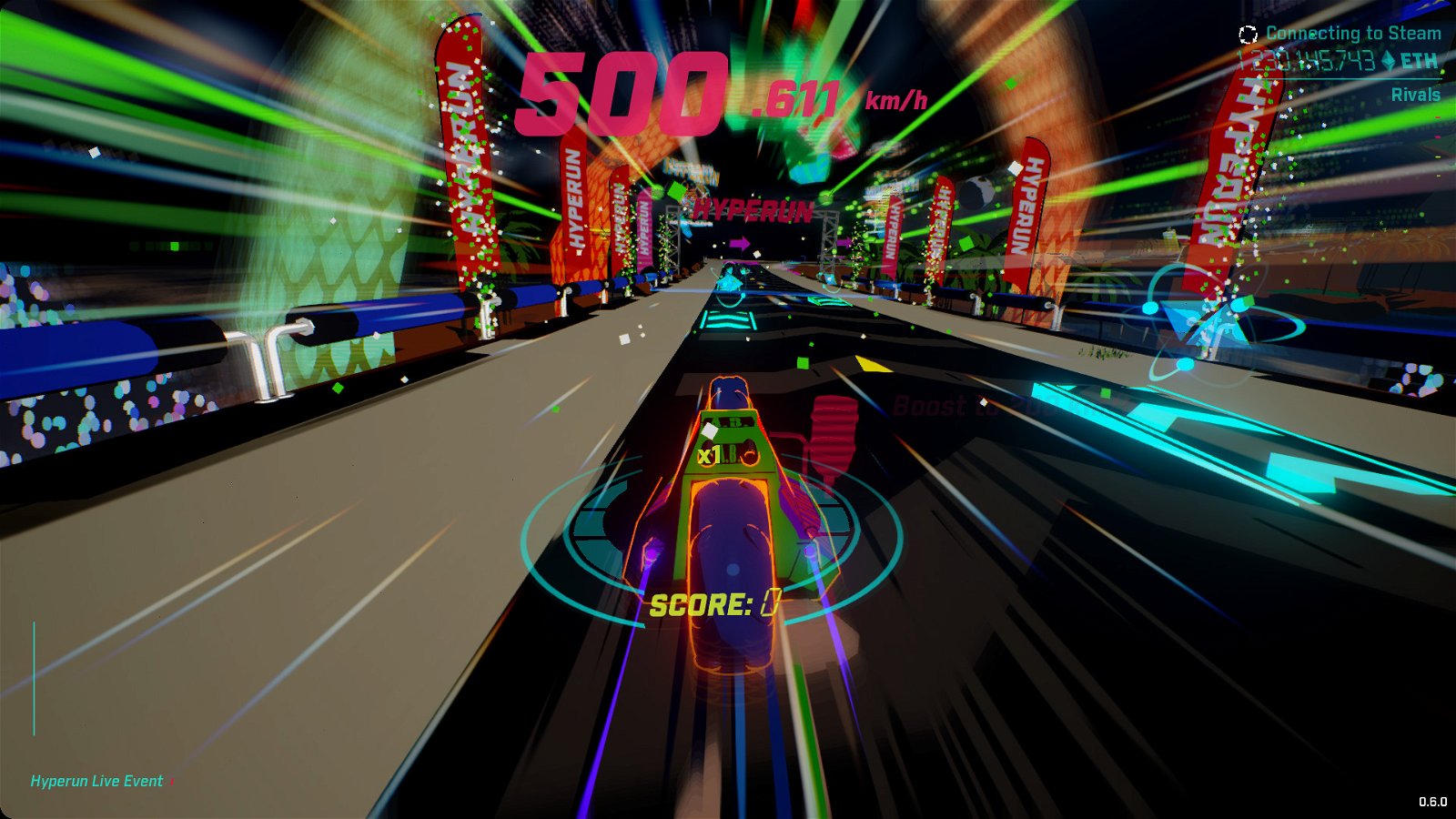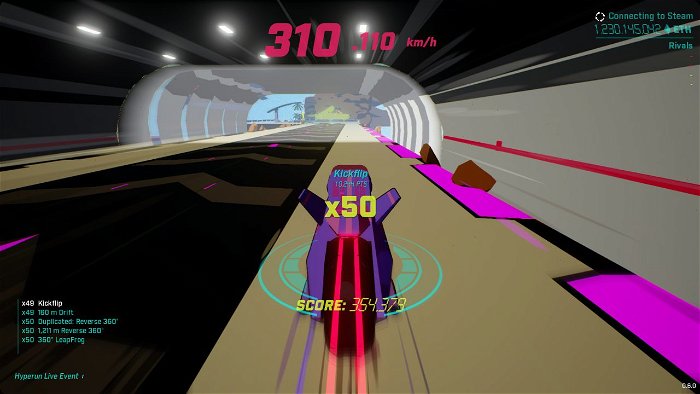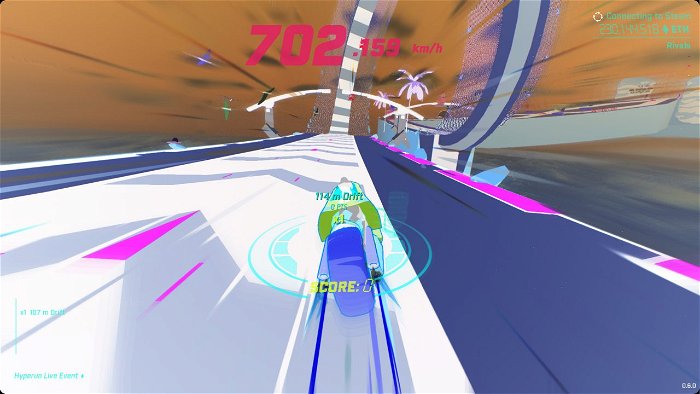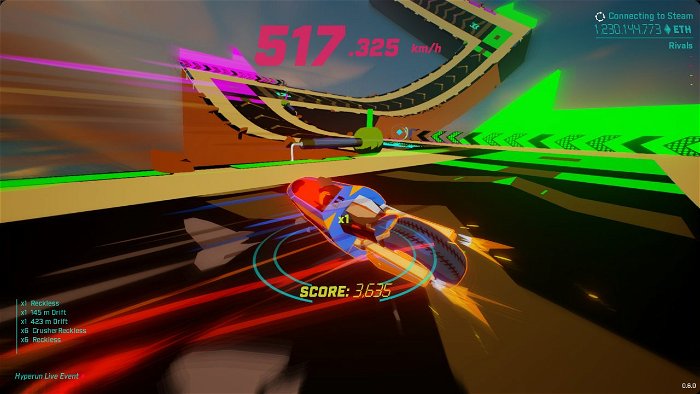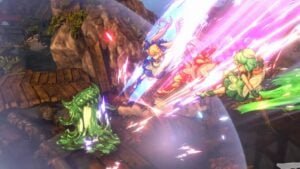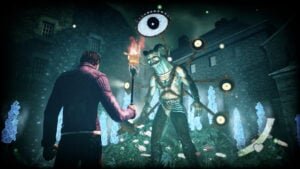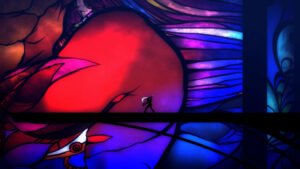With Blade Runner returning to the big screen after 35 years, and the live-action Akira in talks, the filmmaking zeitgeist today is clawing quite a far ways back to satisfy their questionable diet for established franchises.
Instead of continuing the momentum of the creative power-train that these films built by using the inspiration to make something new, film studios seem to want to assure their financial success by resting its laurels on merely reviving these established works and betting on the power of their brands. But for those interested in what it looks like when new brands instead channel the raw energy of the old to create something new, the indie gaming community may be the place to look. Concrete Games’ new release Hyperun may be a model experiment on how a new medium, coupled with a new brand, can propel itself with the rocket fuel of the old giants that came before.
All it takes is one glance and Hyperun will hold a stare. The game steals away Akira’s sense of velocity, speeding away like a high-speed getaway car with a grin on its face and a bag of style in hand. It manages to channel the spirit of Akira, along with a whole list of other inspirations and can be felt in the very digital brush-strokes of the moving motorcycle and rushing wind. The artwork comes as an instant visual relief, considering the state of Steam’s marketplace right now. In the unruly matrix, Hyperun is a woman in red. Regrettably, big budget production has been putting AAA game developers into an artistic armlock of sorts, only be unbound by those with the bravery of bearing the risk of hundred million dollar losses, or those with the strategic incisiveness between art and economics that Ninja Theory is attempting to pull off with their new game Hellblade—a project that reduced its budget to achieve a game that feels AAA but explores indie ideas. Luckily, the indie development scene is popular enough to allow developers the freedom to entertain one new idea after another, venturing again and again across that bold red line to the breakpoint of the thrilling new.
CGM had an email interview with the team at Concrete Games to explore just what it takes to develop a new artistic vision from scratch.
CGM: Your games seem to draw aesthetic inspiration from cultural staples—Public Enemy and hip-hop for your game Public Enemy; 90’s television for MacGuffin; and now Akira and Tron for Hyperun. Do you guys consider this your style?
Concrete: We don’t particularly like to stick to a style. We could do something entirely different for our next projects. But I must say that there is an energy, a kind a raw power that comes from this cultural influences, and we like it a lot. For Hyperun we have tons of influences: SSX, Extreme G, Studio Ghibli’s movies, a little Moebius, Redline, Dead Leaves, Trackmania—especially Trackmania Turbo, Speed Racer, Syd Mead, and any extreme real sports. There are also tons of small inspirations like Split/Second for the in-game user interface for example.
CGM: Why was this the next project? What’s the process like of choosing and developing a visual style?
Concrete: Hyperun was the next project because MatLab, our game designer, had already created a working prototype that was fun to play. The process of choosing a visual style is a mix of, one, something that can stand the test of time; two, is technically fun to create; three, something that isn’t too mainstream; and four, that is interesting to research—for example, I wasn’t at all into anime before starting Hyperun, but it was extremely interesting to learn about it.
CGM: How do you see the relationship between art, design, and programming?
In order to create something that players will appreciate, all of those parts are essential. Thanks to the tools we use like Unreal Engine, the lines are blurred between art, design, and programming, allowing us to create and test our ideas faster than ever. Every aspect of the game supports and is supported by the others, like individual instruments in an orchestra.
CGM: For Corentin [lead artist], why did you decide to get into games over other mediums? What do you think is the future of art in games? Do you think technology ultimately brings less expression or more?
Corentin: Games offer me a mix of world building and technical creation. I like art and technology a lot, for different reasons. Video games offer me both, plus the enjoyment of offering the finished game to people, and that is something that will always be extremely interesting. I’d like to see more non-photorealistic rendering in games. Even if I like photo realism a lot, I prefer to work on things that bring a new vision to people, especially strange ones. I think technology brings more and less expression: some people can do things that they couldn’t have done otherwise, and some others are stronger with less technological tools of expression—but fortunately, all can co-exist because technology isn’t an obligation.
CGM: What have you guys been playing lately. Any artwork that’s particularly interesting or inspiring?
Corentin: We are quite fond of research, especially in video games, because it doesn’t really exist like in the other industries. Also e-sports, Science Fiction, poetic games, VR. We want to make a lot of prototypes of strange and new ideas. I am interested in fluid simulations, retro sci-fi, utopia sci-fi, dense population areas, colorful environments, absurd things, and the list goes on. I’ve been wanting to make this picture in a 3d game environment for a while. Here’s my Pinterest (I don’t update it often).
CGM: How do you think visual art is explored in science-fiction that makes it unique?
Corentin: I’m a big fan of Syd Mead and John Harris. I think that all sci-fi ideas are born in visual form or books—even for things that now exist, at some time it was science fiction. Let’s look at Apple’s 1987 vision of the future. I think they did everything they projected, in a slightly different form, but when you think about it, the ideas first came to existence in the form of pictures that were translated in this ad. How do you explain a new idea? You can write what it does, or you can draw it. Or for games, you can even make it work in the fictitious world! Just thinking about that makes me want to create a lot of things!
CGM: Do you see an importance in blending sound and visual design? Or do the two exist separately?
Concrete: It is of immense importance for sound and visuals to be thought at the same time. Humans like synesthesia a lot, and when pictures and sound form the same shape or complement each other, it creates a message that is really strong. This principle is essential to make the games feel alive and feel juicy!
CGMagazine is Canada’s premiere comics and gaming magazine. Subscribe today to get the best of CGM delivered right to your door! Never miss when a new issue goes live by subscribing to our newsletter! Signing up gives you exclusive entry into our contest pool. Sign up once, you’ll have a chance to win! Sign up today!
Liked this article and want to read more like it? Check out some more of Andrew Ko’s articles here, and here!
Never miss when new CGM articles go out by following us on Twitter and Facebook!
Want to see more videos? Subscribe to our YouTube channel and check out our first look at Knack 2!
